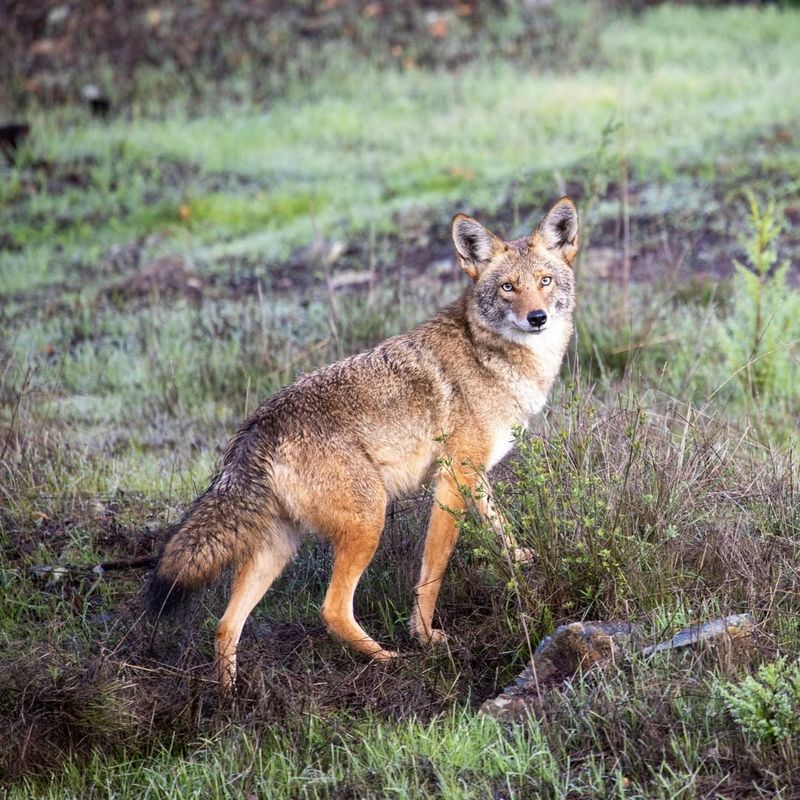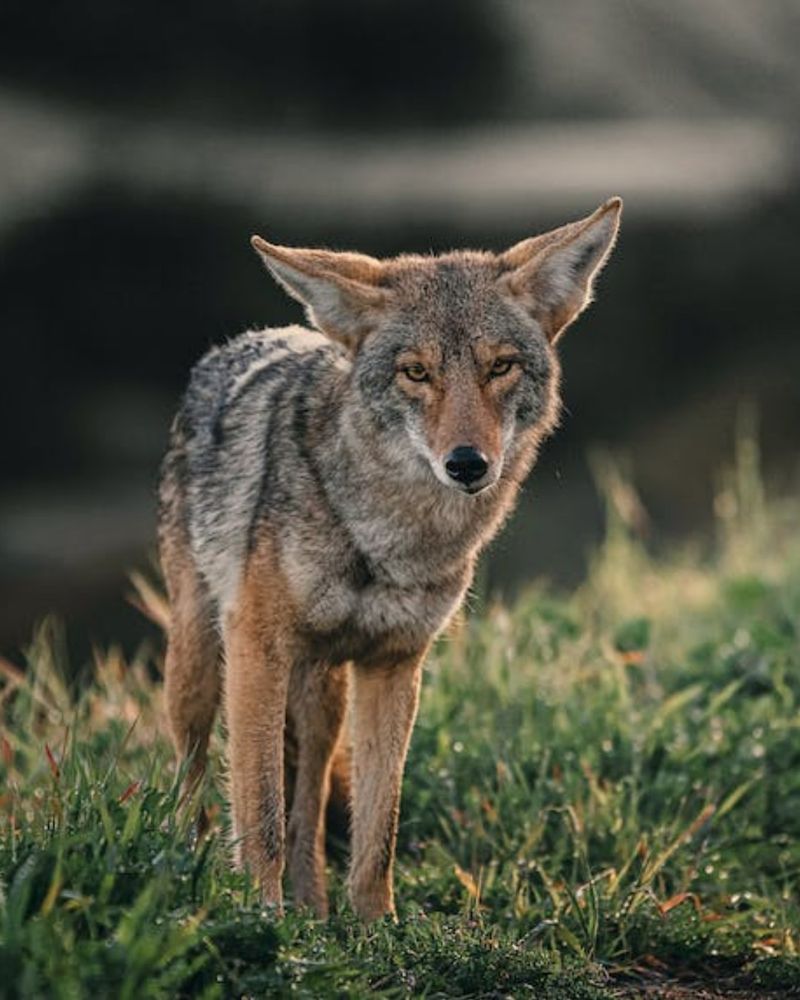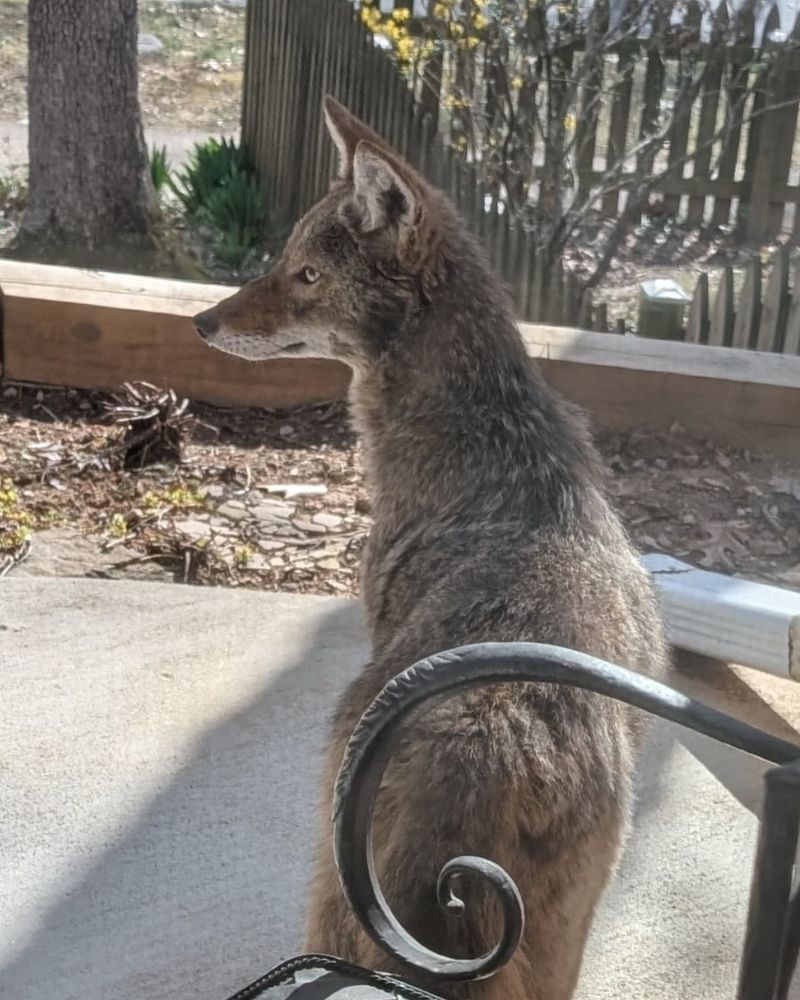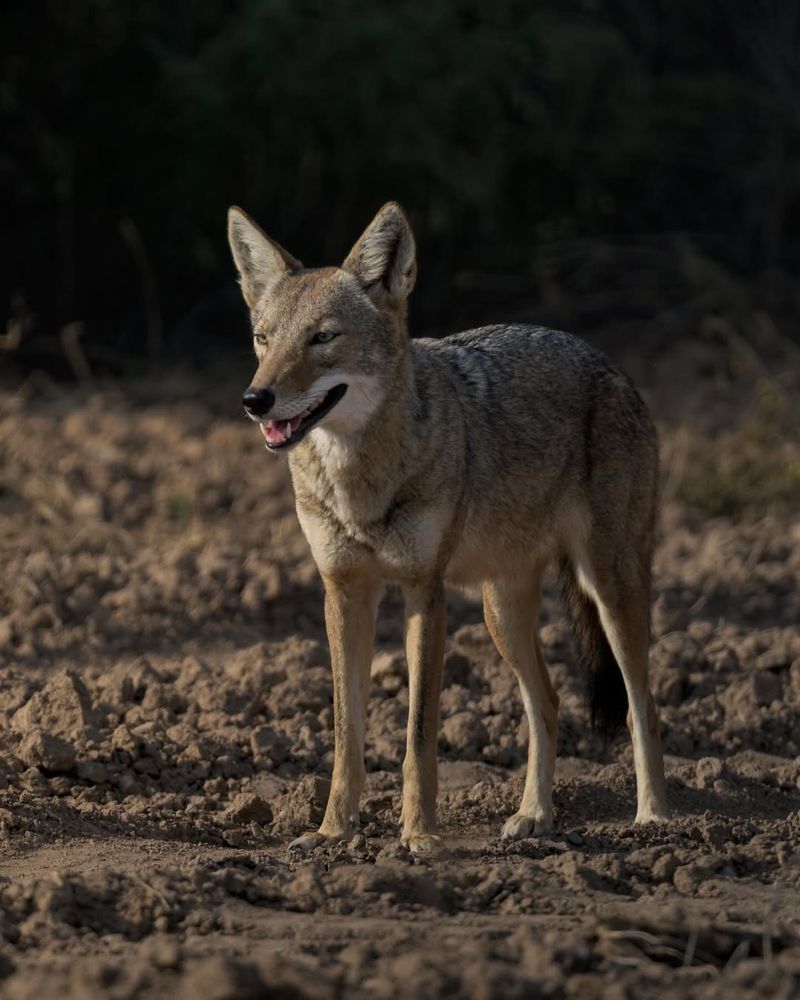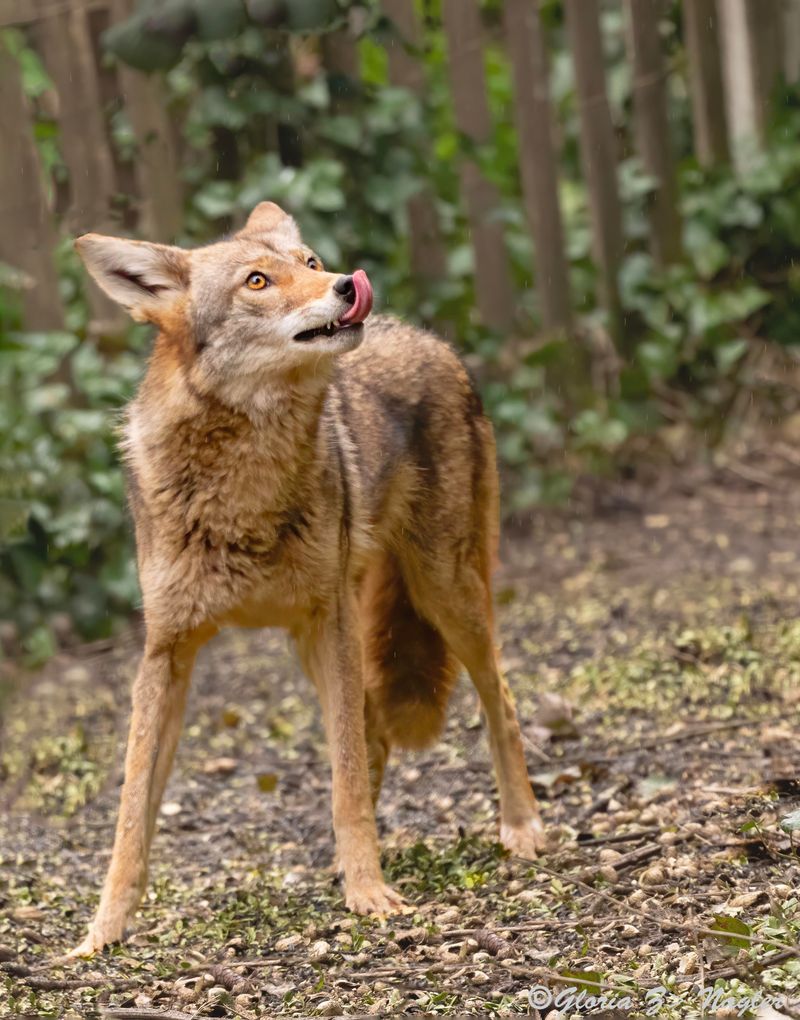Coyotes are wild animals that live throughout Kansas, and running into one can feel scary if you’re not prepared. Knowing what to do when you spot a coyote helps keep both you and the animal safe.
Whether you’re hiking, walking your dog, or just in your backyard, understanding the right actions can make all the difference.
1. Stand Tall And Make Yourself Look Bigger
Making yourself appear larger sends a powerful message to a coyote that you’re not prey. Raise your arms high above your head, open your jacket wide, or even hold a backpack over your head to increase your size.
Coyotes naturally avoid creatures that seem bigger and more threatening than themselves. Stand on your tiptoes if you need extra height, and face the animal directly without turning away.
Your confident posture tells the coyote to keep its distance and think twice about approaching you further.
2. Make Loud Noises And Yell Firmly
Loud sounds can startle a coyote and encourage it to leave the area quickly. Shout in a deep, firm voice, clap your hands together forcefully, or bang objects like sticks or rocks to create noise.
Coyotes prefer quiet environments where they can hunt without disturbance. Your loud presence disrupts their comfort zone and makes them want to retreat to safer territory.
Keep making noise until the coyote moves away completely, maintaining your assertive energy throughout the encounter.
3. Throw Small Objects Near The Coyote
Tossing stones, sticks, or other small items toward the coyote’s direction reinforces that you’re dominant in the situation. Aim for the ground near the animal rather than directly at it to create intimidation without causing harm.
Coyotes understand territorial behavior, and your actions mimic how larger predators defend their space. The sudden movement and objects landing nearby signal that you’re serious about protecting your area.
Keep several items ready in case you need to repeat the action multiple times.
4. Back Away Slowly While Facing The Coyote
Retreating slowly while keeping your eyes on the coyote lets you leave safely without triggering a chase response. Never turn your back completely, as running movements can activate the animal’s hunting instincts.
Move at a steady, controlled pace that shows you’re not panicking but also not challenging the coyote to a standoff. Keep your body angled toward the animal so it knows you’re still aware and watching.
Continue backing up until you’ve created significant distance or reached a safe location like a building or vehicle.
5. Keep Your Pets Close And Protected
Coyotes often view small pets as potential prey or territorial threats, making it crucial to keep your animals nearby during an encounter. Pick up small dogs or cats immediately and hold them securely against your body.
For larger dogs, shorten their leash and keep them between you and safety rather than between you and the coyote. Your pet’s safety depends on your quick action and awareness.
Avoid letting your dog bark or lunge toward the coyote, as this can escalate the situation unnecessarily and put everyone at risk.
6. Use Pepper Spray Or Air Horns If Available
Carrying deterrent tools gives you extra protection when words and gestures aren’t enough to convince a coyote to leave. Pepper spray designed for wildlife works effectively at close range, while air horns create piercing sounds that startle animals.
Practice using these tools before you actually need them so you’re comfortable and quick when an encounter happens. Keep them accessible in your pocket or attached to your belt rather than buried in a backpack.
Both options provide non-harmful ways to defend yourself while respecting wildlife boundaries.
7. Report Aggressive Behavior To Wildlife Officials
When a coyote acts unusually bold or aggressive, reporting the behavior helps wildlife experts track patterns and protect the community. Contact the Kansas Department of Wildlife and Parks with details about the location, time, and the animal’s actions.
Your report might prevent future dangerous encounters for other people, especially children or elderly residents who may be more vulnerable. Wildlife officials can assess whether the coyote needs relocation or if the area requires additional monitoring.
Keep notes about what happened while the memory is fresh for the most accurate report possible.
8. Stay Calm And Confident Throughout
Your emotional state influences how you react and how the coyote perceives you during the encounter. Staying calm helps you think clearly and make smart decisions instead of panicking and doing something dangerous.
Coyotes can sense fear through body language and behavior, so projecting confidence makes you appear less vulnerable. Breathe steadily, keep your movements deliberate, and trust that following safety guidelines will protect you.
Remember that coyotes typically avoid humans and the encounter will likely end quickly if you respond appropriately and assertively.
9. Never Turn Your Back And Run Away
Running triggers a coyote’s natural chase instinct, transforming you from a non-threat into something that resembles prey. Even if you’re terrified, resist the urge to sprint away as fast as possible.
Coyotes can run much faster than humans, reaching speeds up to 40 miles per hour, so you won’t outrun them anyway. Turning your back also removes your ability to monitor the animal’s movements and respond to changes in its behavior.
Always face the coyote and move away slowly and deliberately instead of giving in to panic and fleeing recklessly.
10. Don’t Feed Or Approach The Coyote
Feeding wild coyotes teaches them to associate humans with food, which creates dangerous situations for everyone in the area. Once coyotes lose their natural fear of people, they become bolder and more likely to approach homes, parks, and schools.
Approaching a coyote for photos or a closer look puts you at serious risk of bites or scratches, especially if the animal feels cornered. Respect the distance between you and wildlife to maintain natural behaviors.
Admire coyotes from afar and let them remain wild rather than becoming comfortable around humans and dependent on handouts.
11. Avoid Crouching Down Or Acting Submissive
Crouching makes you appear smaller and weaker, which can encourage a coyote to approach more closely or act more aggressively. Animals interpret low postures as signs of submission or vulnerability in the natural world.
Bending down to pick up something or tie your shoe during an encounter sends the wrong message about your dominance. Stay upright and tall to maintain your position as the more powerful creature in the situation.
If you need to grab an object or pet, do it quickly while keeping your upper body as elevated as possible throughout the movement.
12. Don’t Leave Food Or Trash Accessible Outside
Accessible food sources attract coyotes to residential areas and encourage them to return repeatedly for easy meals. Secure your garbage cans with tight lids, bring pet food bowls inside after feeding, and clean up fallen fruit from trees promptly.
Coyotes have excellent memories and will revisit locations where they’ve found food before, increasing the chances of human-coyote conflicts. Bird feeders can also attract rodents that coyotes hunt, creating an indirect invitation.
Keeping your property clean and food-free reduces coyote visits and helps maintain their natural wariness of human spaces and activities.


